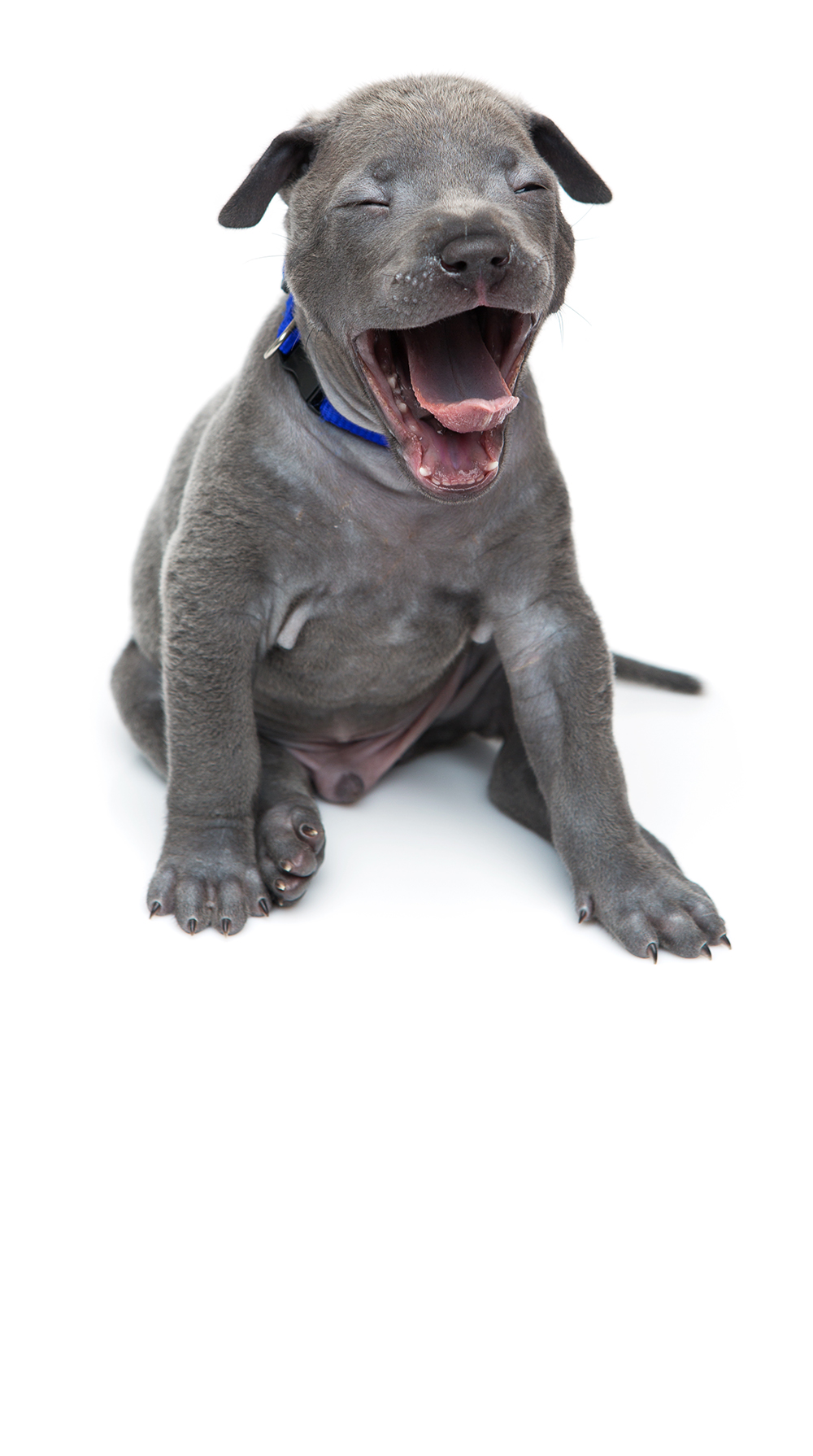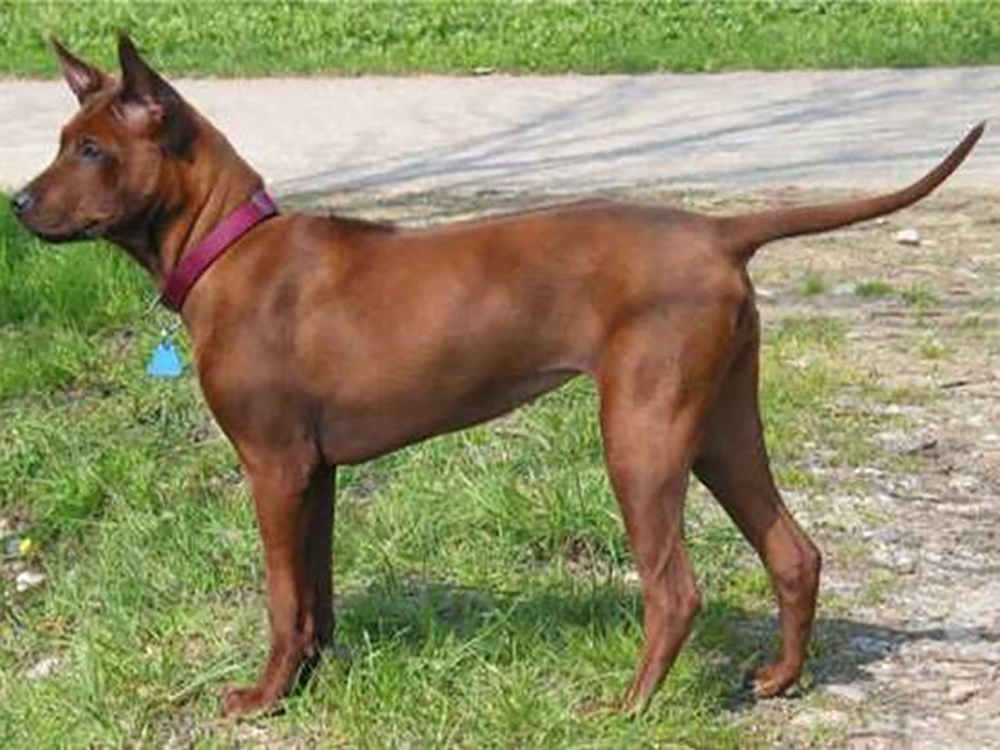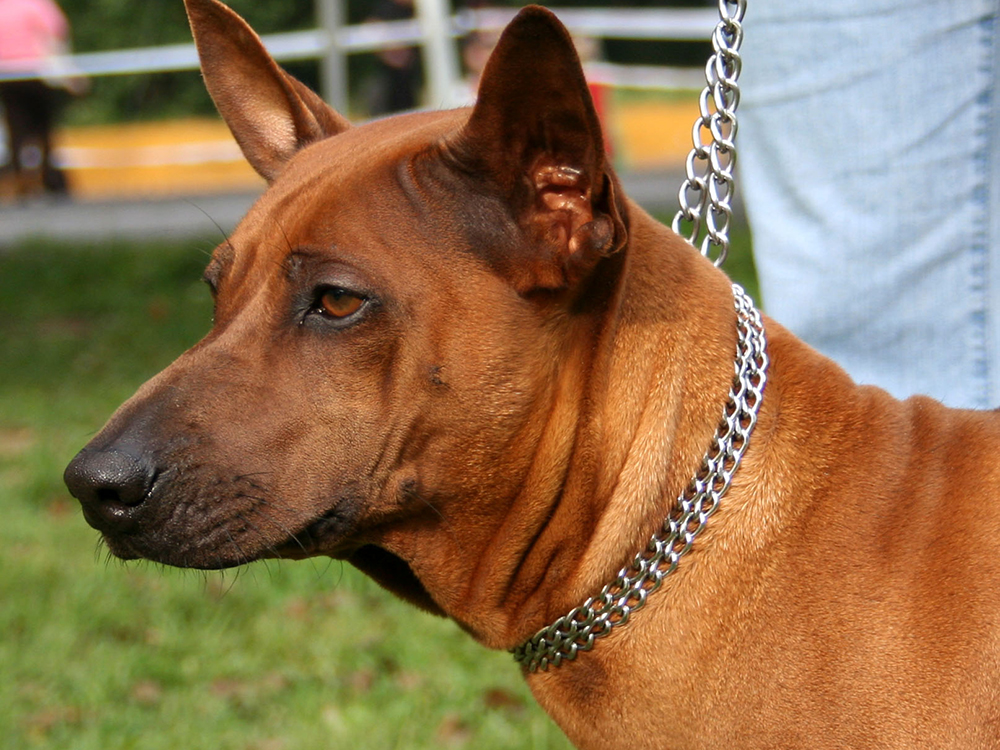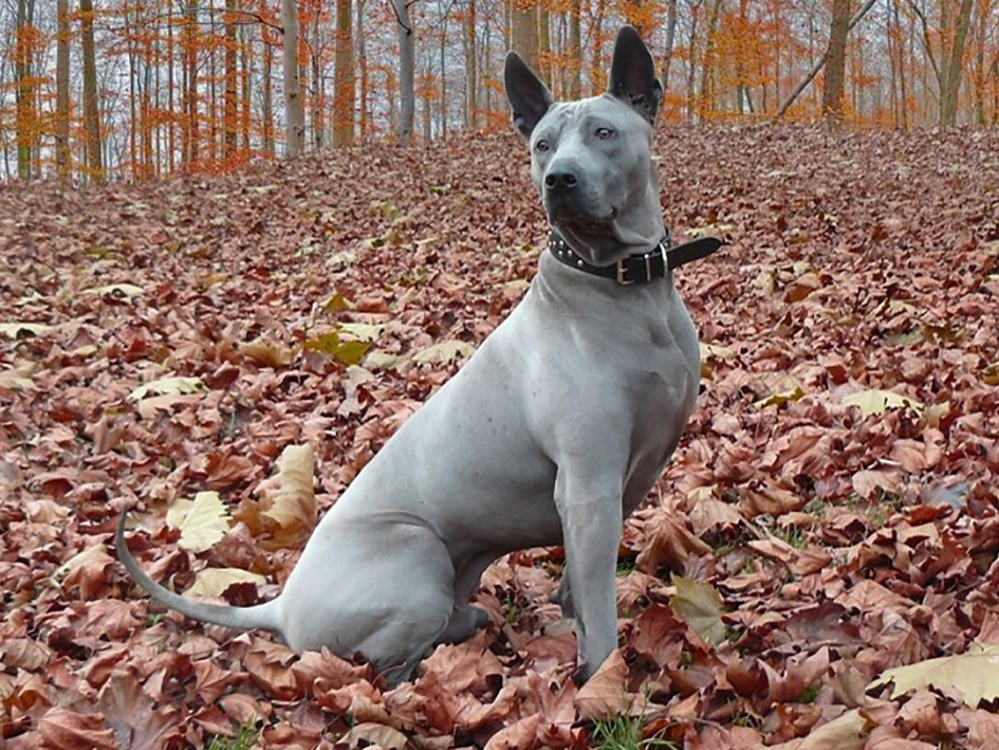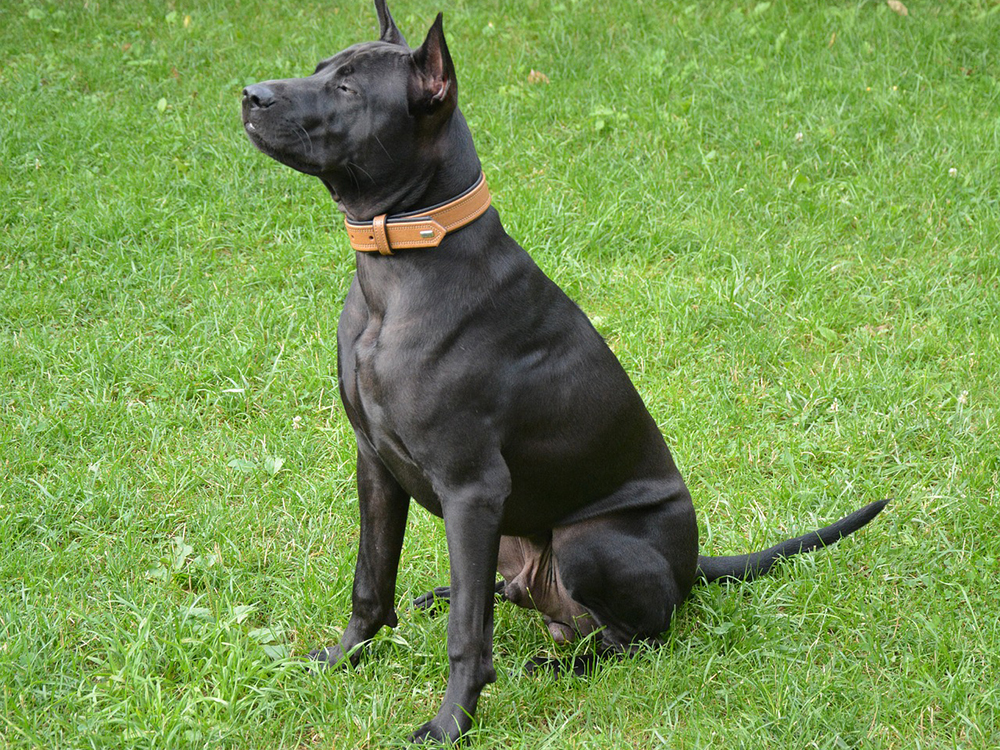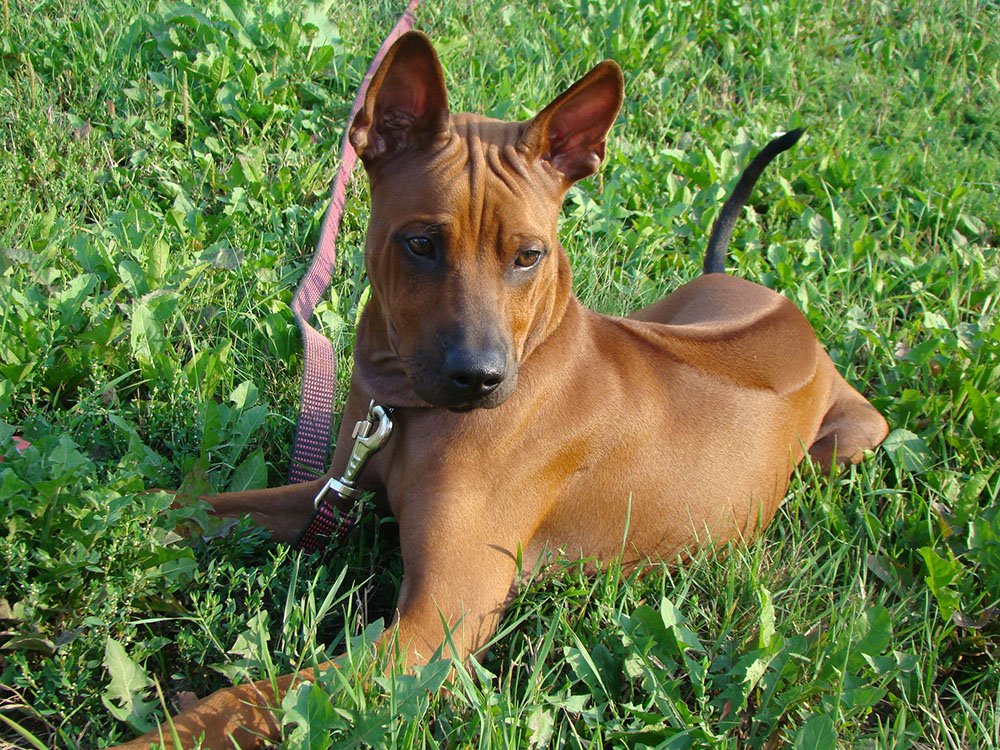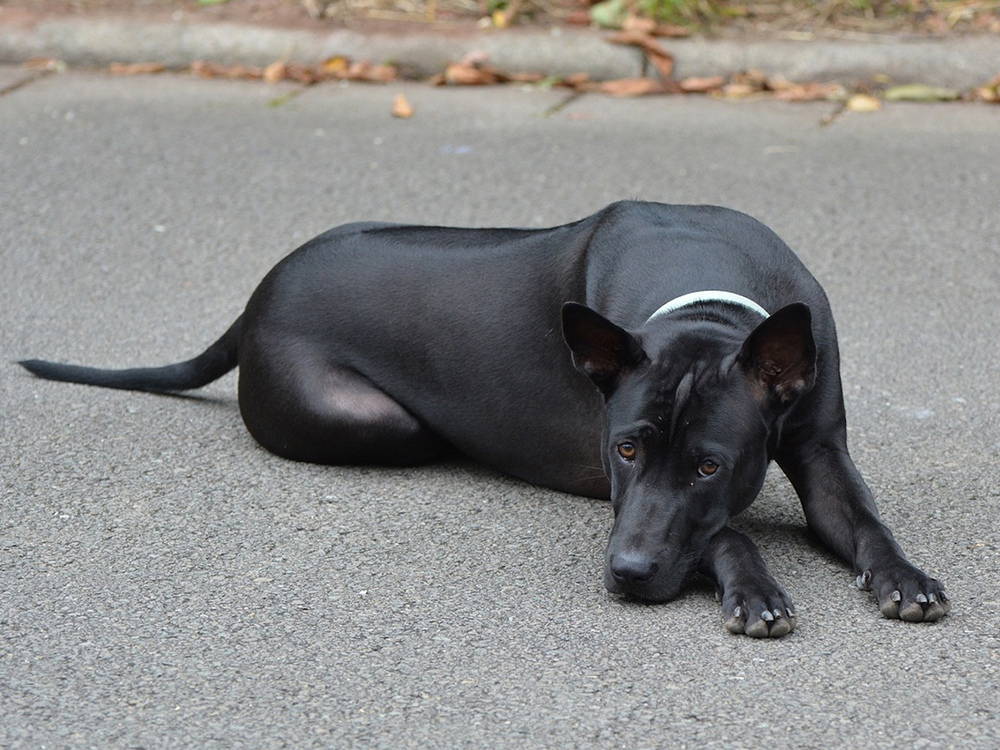
Thai Ridgeback Breed Pictures
Vital Breed Stats
| Height: | 56 - 60 cm M | 51 - 56 cm F |
| Weight: | 23 - 24 kg M | 23 - 24 kg F |
| Life Expectancy: | 10 - 13 years |
| KC Registered: | No |
Breed Characteristics
| Size: |  |
| Grooming: |  |
| Exercise Level: |  |
| Trainability: |  |
| Barking Level: |  |
| Good with Children: |  |
| Good with other pets: |  |
| Affectionate: |  |
| Protective: |  |
| Cost to Keep: |  |
Give a thumbs up if you love the Thai Ridgeback

0
More About the Breed
History
What is the Thai Ridgeback bred for?
The Thai Ridgeback is created to be an all-purpose dog. He can hunt down small prey such as birds and rats and larger animals like wild boars and tapirs. The dog is even known to drive away poisonous cobras.
Farmers used the Thai Ridgeback to escort or pull carts and dubbed him “the cart-following dog.” Families had him as a trusty guard dog for he is quite protective of his owners.
The Thai Ridgeback is a rare breed outside his native land. Since hunting habitats in Thailand is getting fewer and fewer, the Thai Ridgeback is now mainly seen as a family pet than a hunting dog.
What is a Thai Ridgeback?
The Thai Ridgeback also called Mah Thai Lang Ahn is an ancient dog breed originated from eastern Thailand. The breed has long existed 350 years ago. In the 17th century, historical writing mentioned a breed that has a distinguishable ridge of hair running down his back. The dog in this literature is thought to be the Thai Ridgeback.
The Thai Ridgeback is related to the Phu Quoc and Rhodesian Ridgeback as they closely share the same predecessors. Some experts believe that the Thailand Ridgeback descended from the now-extinct Hottentot whilst others think that he is the progeny of the Funan Ridgeback,
The Thai Ridgeback thrived in a somewhat remote part of Thailand. Only a sparse crossbreeding occurred as the years went by. Thus, many dog enthusiasts believe that the Thai Ridgeback is a 'pure' breed. With the help of natural selection, he is one of the healthiest dog breeds to exist.
The Thai Ridgeback dog is sensitive to cold. His aversion to the chilly weather is thought to be connected to the place he originated from, which is a sunny Thailand.
Appearance
How big is the Thai Ridgeback?
Male Thai Ridgebacks are usually bigger than their female counterparts. They stand anywhere from 56 cm to 60 cm. Meanwhile, females stand between 51 cm and 56 cm. Both male and female can weigh around 23-24 kg.
What does a Thai Ridgeback look like?
The Thai Ridgeback is a midsized dog with a lean, muscular figure. It makes him a fleet-footed and athletic canine. His wedge-shaped head is carried with confidence. His large ears are raised upright somewhat leaning forward and set high on his head.
He sports a black nose and has dark-brown, almond-shaped eyes that show a keen expression.
His muzzle, just like his head, is wedge-shaped. He has a tongue that tends to be pigmented with either black or bluish spots. It is natural for the Thai Ridgeback to be loose-skinned. Thai Ridgeback puppies have creases much like Mastiff and Sharpei dog breeds. These creases will smoothen out gradually as they continue to mature.
The Thai Ridgeback has a strong neck and strong muscled shoulders. His powerful back is firm and covered with thick hair. He has a straight and his hind legs are quite lean and long. His tail is curved upwards like a sickle and its tail is thick at the base which tapers at the end.
The Thai Ridgeback's coat is short and just like what his name says a fur of the ridge is formed on his back. It grows in the opposite direction from the other hairs of his coat. He has about 8 various ridge patterns. The coat colours of the Thai Ridgeback may come in black, blue, red, and yellow.
Grooming
Are Thai Ridgebacks hypoallergenic dogs?
The Thai Ridgeback is not a hypoallergenic dog. Dog owners with allergies may suffer allergic reactions to dander, which are flakes found in a dog’s skin, or saliva.
The Thailand Ridgeback dog's short close-lying coat is straight and hard so it only needs minimal grooming. Brush him weekly using a rubber curry brush to remove dead or loose hairs and dirt. Mind that he is a seasonal shedder that moults his coat twice a year at most. During this time, frequent brushing is needed.
Bathe him only when he stinks or dirty. Avoid washing him often as it can damage and dry out his skin and hair. Ear inspection and cleaning should be done at least once a month.
Trim his nails every 1 to 2 months to avoid cracking or splitting. Periodontal diseases are a common problem in canines. Daily toothbrushing will keep your dog safe from these health issues.
Temperament
The Thai Ridgeback is well-known for his extreme loyalty to his owners. Whilst he showers his family with love and affection, he is relatively cautious around strangers. These traits are the reason why he makes a great guard dog.
Keep in mind that early training and socialising are needed to prepare him for the role of a guard dog. Getting him used to new faces in different environments will shape him into a friendly and confident dog. Moreover, it will improve his skills in accurately identifying who is a threat.
The Thai Ridgeback is suitable for families with older children. His interactions with toddlers and other animals need to be supervised. Most dogs are unaware of how big they are. When the Thai Ridgeback gets too excited during playtime, he might accidentally knock off younger kids and smaller animals.
The breed also possesses a high prey drive which makes him chase and nip at the heels of anything that’s moving. Through consistent training and proper socialisation, this behaviour can be corrected.
Intelligence
Training the Thai Ridgeback requires patience because even though he is a smart dog, he also has an independent nature. The Thai Ridgeback will do things his way if you don't gain his trust and respect. Assert yourself as a leader and maintain a firm and consistent training with gentle handling.
Never resort to punishment or rough training methods as they can make him develop aggressive behaviour. To keep his motivation up in training, use a positive reinforcement method. Give him a treat, praise him, or reward him with a fun activity.
Nutrition
The Thai Ridgeback is a highly energetic dog so provide him with a premium quality dog food that is appropriate for his age and energy levels. It is packed with nutritional content that will sufficiently replenish his energy. Do not forget to fill his water bowl with fresh water every day especially during hot weather.
Stay away from commercialised dog food. It is often cheap in price but low in nutrients and minerals. Some may even contain ingredients such as flavourings, additives, and preservatives that will endanger your dog’s health. It is best to invest in a slightly more expensive high-quality dog food that will cater to his nutritional needs.
Feeding
Thailand Ridgeback puppies should be fed at least 1 to 2 cups of dog food every day. Always make sure to divide their meals into 3 small portions. It will make digestion easier for the puppies.
Adult Thailand Ridgeback dogs that weigh around 23 kg need 1.1 to 1.4 cups of dog food per day. Fully grown Thailand Ridgebacks weighing 24 kg require 2 cups of food daily. Break their meals into 2 servings to avoid overeating.
Health
- Dermoid Sinus
- Hip Dysplasia
Exercise
As a high-level energy dog, the Thai Ridgeback needs more time for exercise than other breeds. Sixty to ninety minutes of walking and fun games and activities is enough to expend his energy. It is best not to keep him off-lead during walks as he might suddenly run after other dogs.
If you have a spacious backyard, let him run around and play to his heart’s content. Keep in mind that Thai Ridgebacks are excellent jumpers, therefore, you need to make sure that the enclosure is secure and high enough to keep him in.
Cost of Ownership
The cost of a healthy and well-bred Thai Ridgeback puppy is at least £1,500. On top of this, buying all the necessities your dog needs costs anywhere from £200 to £400. Food expenses are estimated at £300 to £500 annually.
Vet fees for each session of check-ups on average are £60. Getting him vaccinated will require you to pay around £100 whilst yearly boosters will cost you £50 per shot. Opting to acquire pet insurance has a monthly premium of £20 to £30 for a healthy puppy.
Thai Ridgeback Breed Highlights
- The Thai Ridgeback is a very loyal dog that will stand his ground and protect his owners.
- He has low grooming needs but requires frequent brushing during the shedding season.
- He does well with older children and pets if he is properly trained and socialised during puppyhood.
- Training can be very challenging but not impossible as long as it is firm and consistent.
- He is an energetic and athletic dog that requires a longer time for exercise.
